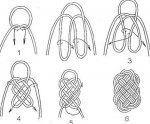Mr Don
New member
In these environmentally conscious days. What should re do with old tired rope?
How do we recycle it?
All of the materials used in our ropes can be recycled. (Steel, stainless steel, nylon, polypropylene , polyester, polyethylene terephthalate, natural fibre and now even dyneema).
What are people doing with it?
Where can I send or take it to be recycled or repurposed?
I do not want to make a pile and burn it, releasing toxic substances into the air as I have seen others doing. It seems such a waste to just bin it to the landfill.
How do we recycle it?
All of the materials used in our ropes can be recycled. (Steel, stainless steel, nylon, polypropylene , polyester, polyethylene terephthalate, natural fibre and now even dyneema).
What are people doing with it?
Where can I send or take it to be recycled or repurposed?
I do not want to make a pile and burn it, releasing toxic substances into the air as I have seen others doing. It seems such a waste to just bin it to the landfill.


